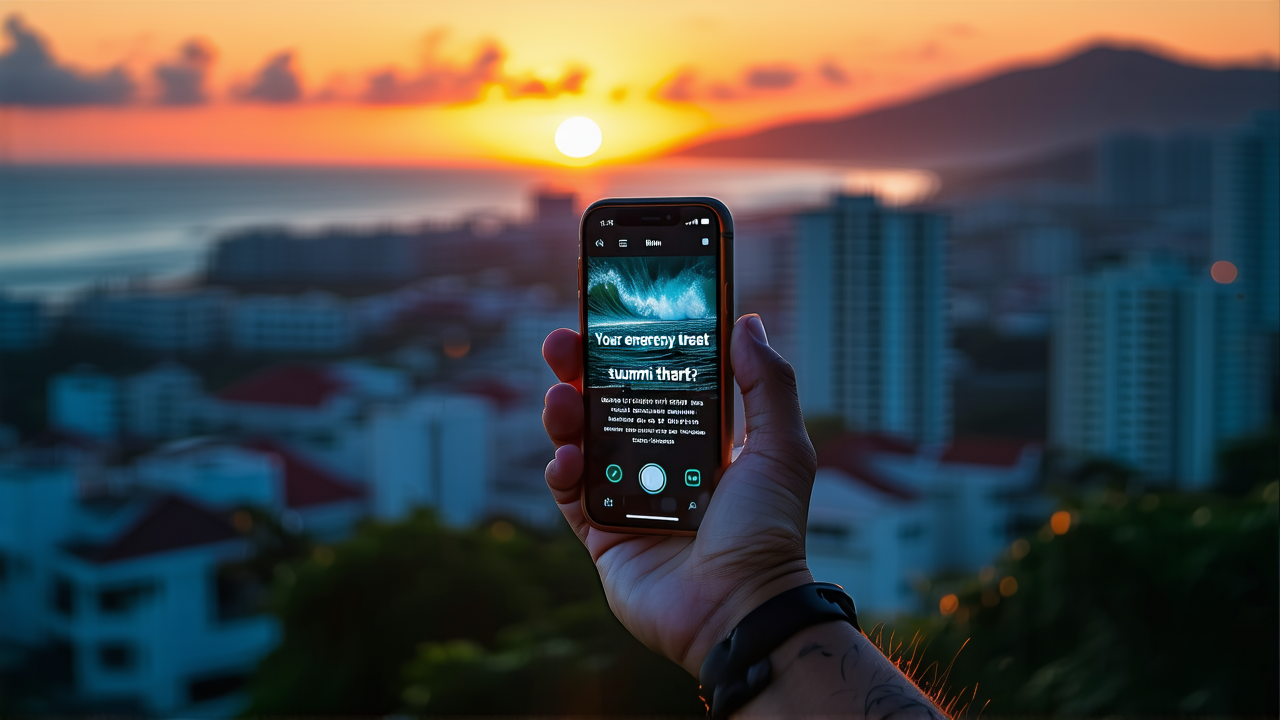New Zealanders Woken by Morning Alert as Emergency Agencies Explain the Situation
New Zealanders Woken by Morning Alert as Emergency Agencies Explain the Situation
Many New Zealanders were jolted awake this morning by an urgent mobile phone alert around 6:30 AM, while others either received none or multiple alerts. The emergency management department has since provided an explanation for the incident, which was linked to a major earthquake in Russia on Wednesday (July 30).
The alert was triggered due to the risk of strong ocean currents and unpredictable surges, which remain high, and the impact on New Zealand's coasts is expected to last until noon today. John Price, the head of the National Emergency Management Authority (MEMA), explained on RNZ's Morning Report that the issue was due to a technical malfunction.
He confirmed that two official alerts were sent out: one on Wednesday afternoon and another on Thursday morning. The second alert was issued to remind New Zealanders, particularly those commuting, going to school, or engaged in other activities, to avoid coastal areas as the tsunami threat still exists.
Some listeners reported receiving multiple alerts, while others received none. Helen from Christchurch said she didn’t receive any alert, while a woman in Levin mentioned that she didn’t get the alert, though her neighbors did. Others said the alert disappeared before they could even reach their phones. One listener described receiving the alert repeatedly, leading to her phone’s battery draining completely.
Price stated that the issue is currently being investigated. “The system appears to have failed. We did send these alerts, and we are urgently looking into the problem,” he said. “It was a technical fault, not our fault—it was a software issue. We use a third-party software company and send alerts through three mobile network providers.”
The alert was targeted at coastal areas. “As to why it was repeated or delayed, these are things we need to investigate,” Price added. He emphasized that the emergency alert system is a tool to inform people of urgent situations, but other media channels, such as radio and television, are also crucial. “That’s why we tell people this single channel is not foolproof—we must use multiple different communication methods, which is why we also use various communication channels to spread the message.”
What is the phone emergency alert? It is a direct alert sent to your mobile phone. New Zealand has used this service since 2017. The alert usually comes with a loud sound, even if your phone is on silent. Along with the sound, a message with details about the emergency is displayed. These alerts are used for various situations, such as tsunami warnings, dangerous fires, typhoons, and tropical cyclones. Many countries have also used this system during the pandemic, and New Zealand has extensive experience with it.
How does the alert system work? The system uses a technology called cell broadcast, which sends messages through a network of base stations in a specific geographic area. The system is provided by the Dutch company One2Many, now part of the American software company Everbridge Public Warning. According to Everbridge, a message can be sent to millions of devices in a target area within seconds.
Anthony Frith, the communications director at NEMA, explained that the alert system works similarly to how a radio signal is received. “You can think of it as a signal your phone can receive, just like a radio.” When an alert is issued, the operator selects a polygon area on a map to ensure it covers enough base stations. However, factors such as the location of a person’s phone, the age of the device, or lack of signal can affect whether the alert is received.
Frith clarified that the system does not store any personal phone numbers. “Our system does not have anyone’s phone numbers. Once we send a message through the platform, it is transmitted to the base stations, which then send it to phones in the target area.”
Can I opt out of the alert? Unfortunately, you cannot. The purpose of the alert is to notify people in an emergency, so there is no option to exclude yourself from receiving it. The alerts are sent through base stations, and there is no “opt-out” list.
In April of this year, several alerts were sent out in Auckland, causing some public backlash on social media. Adam Maggs, the head of the emergency management department in Auckland, acknowledged the feedback but emphasized the importance of the alerts in keeping people safe. “We receive a lot of feedback from Aucklanders who want to be removed from the EMA system, but it’s not possible. We also receive a lot of gratitude. It's difficult to avoid, and we don’t mind it. Our goal is to keep Aucklanders as safe as possible in an emergency, and we will continue to do so without hesitation.”
As the investigation continues, emergency management officials are urging the public to remain vigilant and to follow official advice through multiple communication channels. The incident highlights the importance of having a robust and reliable emergency alert system, while also showing the challenges that come with relying on technology in critical situations.
